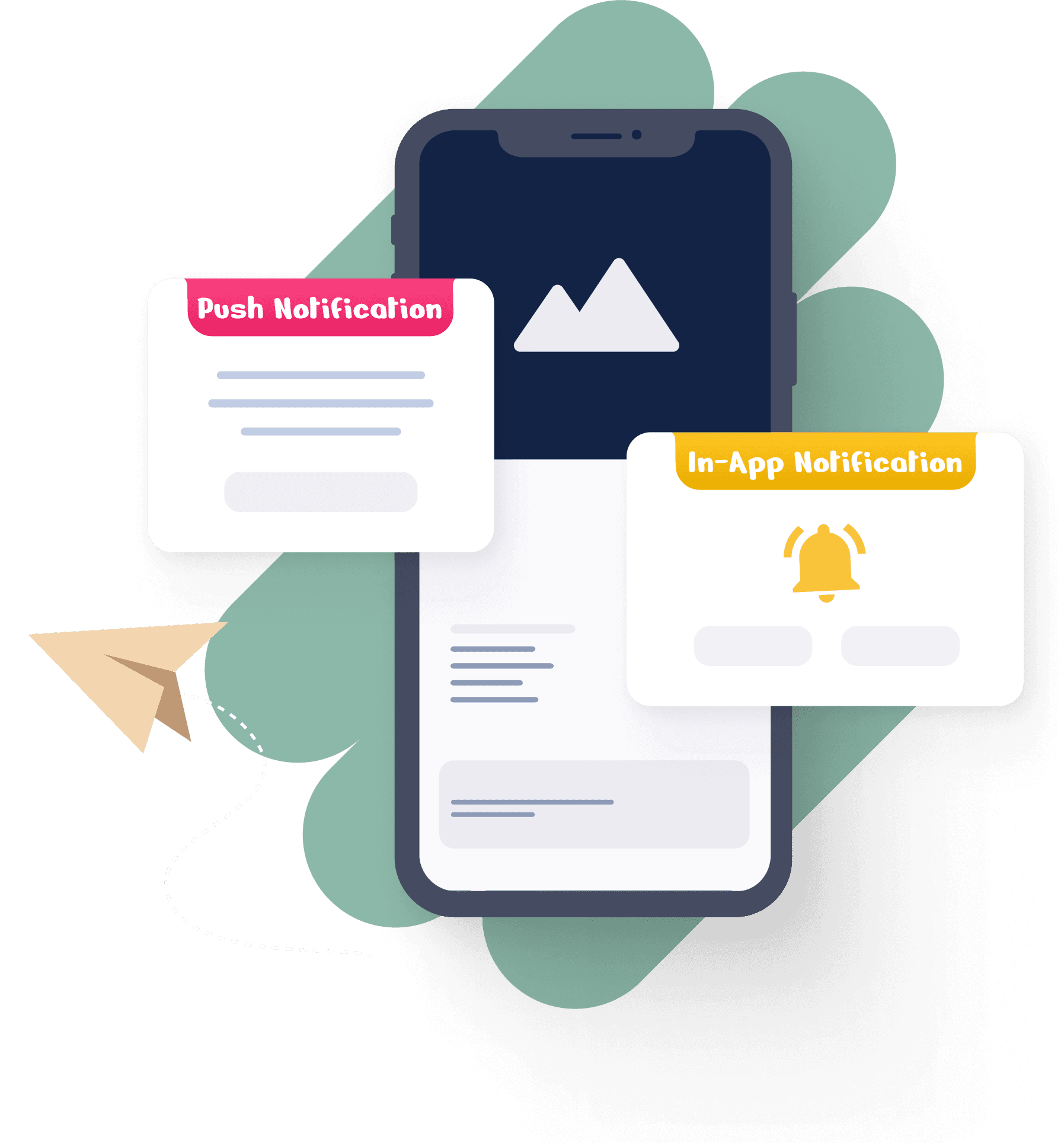3
min to read
Apr 26, 2024

In the fast-paced world of digital marketing, staying ahead of the competition requires businesses to leverage the latest trends and technologies to engage their audience effectively. Push notifications have emerged as a powerful tool for reaching users directly on their mobile devices, but the key to success lies in delivering personalized, relevant, and engaging messages. Personalization trends in push notifications are reshaping the way businesses connect with their audience, driving user engagement, loyalty, and conversions. In this article, we will explore the evolving landscape of push notification personalization trends and how businesses can stay ahead in a competitive digital landscape.
The Importance of Push Notification Personalization

Personalization has become a cornerstone of effective marketing strategies, allowing businesses to create tailored experiences that resonate with individual users. In the realm of push notifications, personalization is key to capturing users' attention, driving engagement, and fostering long-term relationships. By delivering personalized messages that are relevant to users' preferences, behavior, and interests, businesses can stand out in a crowded digital marketplace and drive meaningful interactions.
Embracing Personalization Trends in Push Notifications
1. AI-Powered Personalization
AI-powered personalization is a game-changer in the world of push notifications, enabling businesses to create hyper-relevant messages that resonate with individual users. By leveraging artificial intelligence and machine learning algorithms, businesses can analyze user behavior and preferences to deliver personalized push notifications that drive engagement and conversions.
2. Behavioral Segmentation
Behavioral segmentation allows businesses to divide their user base into distinct segments based on demographics, behavior, or preferences. By targeting specific user segments with tailored push notifications, businesses can deliver relevant and timely messages that drive meaningful interactions and conversions.
3. Location-Based Notifications
Geolocation-based notifications are becoming increasingly popular in push notifications. By sending user messages based on location, businesses can deliver hyper-targeted messages, such as nearby deals and event reminders, that are relevant and helpful to users based on real-time or past location data.
4. Rich Media
Traditionally, push notifications were limited to text-only messages. However, modern push notifications can include rich media elements like images, videos, GIFs, and audio. Rich media push notifications are becoming more popular, increasing users' reaction rates and driving higher engagement and conversions.
Staying Ahead in a Competitive Landscape
In a competitive digital landscape, businesses must stay ahead by embracing the latest trends and technologies in push notification personalization. Here are some strategies to help businesses stand out and drive user engagement:
1. Continuous Optimization
Continuously optimize push notification campaigns based on real-time data and user feedback. Test different content variations, timing, and calls-to-action to identify the most effective strategies that resonate with users and drive conversions.
2. Personalized Messaging
Deliver personalized push notifications based on user preferences, behavior, and segmenting customers. Tailor messages to each user's interests and needs, increasing user engagement and conversion rates by delivering content that resonates with them.
3. Real-Time Communication
Leverage real-time communication to send timely and relevant messages to users, such as updates on order status, shipping information, or in-stock availability. Provide users with up-to-date information that reduces confusion and frustration, leading to higher customer satisfaction and loyalty.
4. Integration with Other Technologies
Integrate push notification software with other technologies, such as AI, machine learning, and analytics tools, to provide valuable insights into user behavior and preferences. By leveraging these technologies, businesses can measure the effectiveness of their campaigns and optimize user engagement and retention.
Case Studies and Success Stories
1. E-commerce Platform
An e-commerce platform implemented personalized push notifications based on user behavior and preferences. By delivering hyper-relevant messages, the platform saw a significant increase in user engagement and conversions, driving revenue growth and customer loyalty.
2. Travel App
A travel app used location-based notifications to send user messages based on real-time location data. By delivering hyper-targeted messages, the app increased user engagement and retention, driving app usage and customer satisfaction.
3. Retail App
A retail app leveraged rich media push notifications to include images and videos in their messages. By creating visually appealing and engaging content, the app saw higher user reaction rates and increased engagement, leading to higher conversions and sales.
Conclusion
In today's competitive digital landscape, push notification personalization trends are reshaping the way businesses engage with their audience. By embracing AI-powered personalization, behavioral segmentation, location-based notifications, and rich media elements, businesses can create hyper-relevant messages that drive user engagement, loyalty, and conversions. Staying ahead in a competitive landscape requires businesses to continuously optimize their push notification strategies, deliver personalized messaging, leverage real-time communication, and integrate with other technologies to enhance user engagement and retention. By adopting these personalization trends and strategies, businesses can stand out in a crowded digital marketplace and drive meaningful interactions with their audience.



